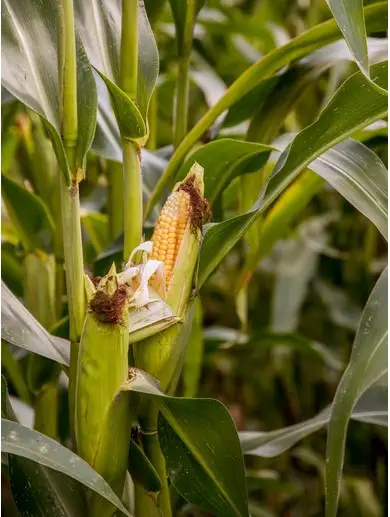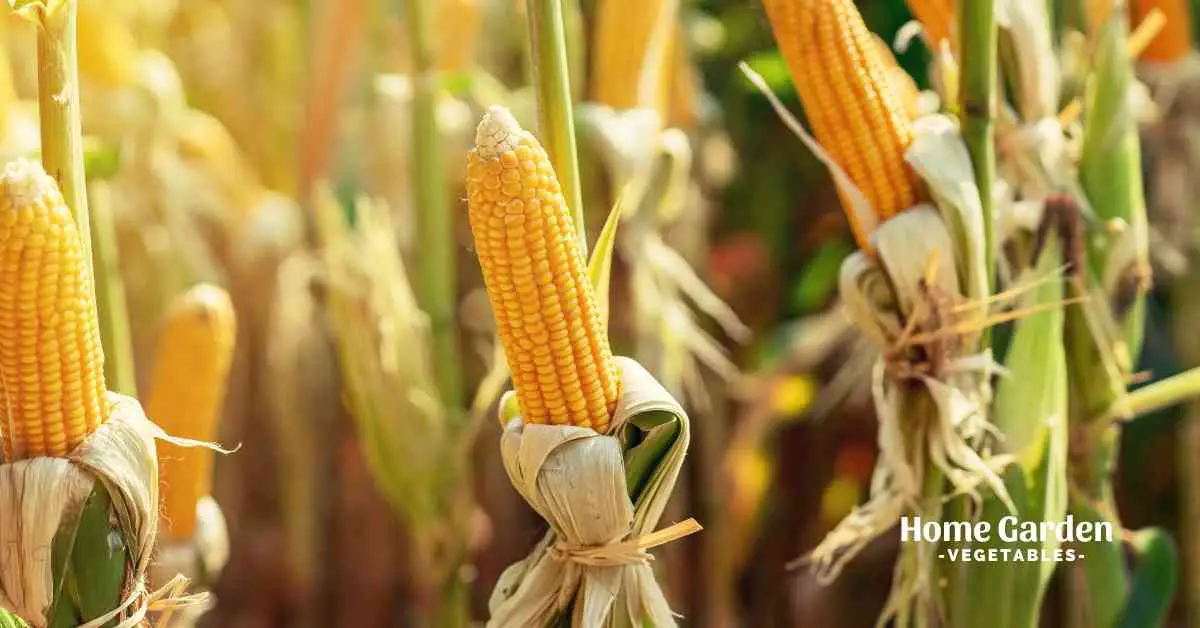Corn is one of the most commonly eaten produce and eat, and it tastes even better when it’s picked fresh. It’s also shockingly simple to cultivate in your own backyard. To enhance cross-pollination between corn stalks in small gardens, you should plant them in square blocks rather than long rows. Corn, like other vegetables, thrives in regions where there is lots of sunshine.

On a hot summer day, everyone likes corn on the cob slathered with butter. It may also be blanched and frozen, allowing you to enjoy corn from your own home garden throughout the year.
Reader Poll: What online courses would interest you?
Growing Corn in Home Garden
Corn is one of the plants cultivated under the Three Sisters method, which is a classic Native American vegetable methodology. Beans and squash are the two plants in the Three Sisters, each had a part in this practice of companion planting. The vining beans were supported by corn. Squash was used as a ground cover to keep weeds at bay. Whereas, beans served as a natural fertilizer for everyone.
Sweet corn is a summer-blooming annual crop that is planted in the spring and continues to thrive throughout the summer. It takes roughly three months from planting to harvest, but early cultivars might take as little as two months.
Types of Corn
Corn is available in three seasons: early, mid, and late. Early-season types mature the fastest, whereas late-season kinds may take the full growing season to mature. Plant types with varied “days to maturity” for a longer harvest.
Subscribe to our newsletter!
On the exterior, most corn types resemble one another. Sweet corn, on the other hand, might be yellow, white, or even bicolor. Many current sweet corn varieties have been developed to mature early in the growing season, however, the sweeter kinds are those that mature later.
When to Plant Corn?
Corn yields are generally highest when planted in the late dates of April or early May. Providing spring arrives early, planting in mid-April gives a comparable yield if the young plants are not harmed by a May freeze.
Corn should be planted immediately in the garden to avoid moving its delicate roots.
Growing Corns in Home Garden
Corn is a very simple crop to raise if you have adequate room. To guarantee effective pollination, you’ll need at least a 10-foot by 10-foot space. Your corn yield will be better and more consistent if your plot is larger.
Corn Varieties to Grow at Home
Some of the main varieties of corn to grow at home include:
- Blue Hopi
- Jubilee Hybrid
- Picasso Hybrid
- Ambrosia Hybrid
- Golden Bantam
- Nirvana Hybrid
- Honey Select Hybrid
- Ruby Queen Hybrid
- Stowells Evergreen
- Silver Queen Hybrid
Selection of Growing Site
Select a sunny location in the garden. Make sure it’s big enough to grow a chunk of maize in. Corn can grow in a variety of soils, however, this plant likes well-drained soil with preferably a pH of 5.5 to 7.0. Corn may suffer from magnesium insufficiency in sandy soils or if the soil has a low pH.
Preparation of Soil
Before planting corn, remove weeds, any garbage, and rocks till the top eight to ten inches of soil. Only work the soil when it’s dry enough that it won’t adhere to your garden equipment.
Fertilizing Corn Crop
For every hundred square feet of garden space, apply 2 to 3 pounds of fertilizer, such as 10-10-10. Apply the fertilizer equally to the soil surface and work it 3 to 4 inches deep. To smooth the soil’s surface, rake it.
Planting The Corn Crop
Seeds from previous year’s sweet corn should not be used since they will not produce a decent yield. Instead of one long row, sweet corn thrives best when sown in multiple small rows.
This makes pollination simpler for the corn plants, and excellent pollination is required for plump, juicy kernels in corn ears.
This is a warm-season crop that must be planted once the soil has warmed up and the threat of frost has passed. For every 100 feet of row, you’ll need 1 to 2 ounces of seed.
Sowing Seeds
Sow corn seeds directly in the ground after a couple of weeks of the final spring frost date. Corn seeds should be planted 1 inch deep in the ground and 3 to 4 inches apart in a row.
Sow 2 seeds in one hole, 30-40cm apart, as seeds might be picky. Rows should be 212 to 3 feet apart. Thin the plants to 1 foot apart once they’ve been established. Your corn will grow little, poorly-filled ears if you plant them closer together.
Watering Corn Plants
To protect sweet corn from withering, water it as needed. When the kernels are developing, do not allow the corn to suffer from a lack of water.
Mulching
Mulch the ground around the base of the corn plant with organic mulch, such as sugar cane or pea straw, as the seedlings grow.
Tips to Grow Healthy Corn
- Corn is a plant that loves heat and develops quickly from seed, however, the seeds won’t germinate if the soil is not sufficiently heated.
- Just below the surface, hoe or till the soil. Just below the soil’s surface, hoe the weeds out. Corn roots that are near to the surface of the soil will be severed by deep hoeing.
- Kernels will only grow if pollination between plants is enough; this is why corn should be grown in blocks rather than in single rows.
- When the hair or silk on top of the corn is dark and shriveled, and the fluid within the kernel is milky, it’s time to harvest it. The corn isn’t ripe if it’s still clear.
- Apply 1 cup of fertilizer every 10 feet of the garden row when the plants are about 2 feet tall. Spread the fertilizer equally between the rows and softly incorporate it into the soil.
Conclusion
A continuous growing season is one of the numerous strategies for maize sowing. Plant a variety of corn varieties that mature around different times to achieve this. Alternatively, plant the same type of corn 10 to 14 days apart to ensure a continuous yield.

